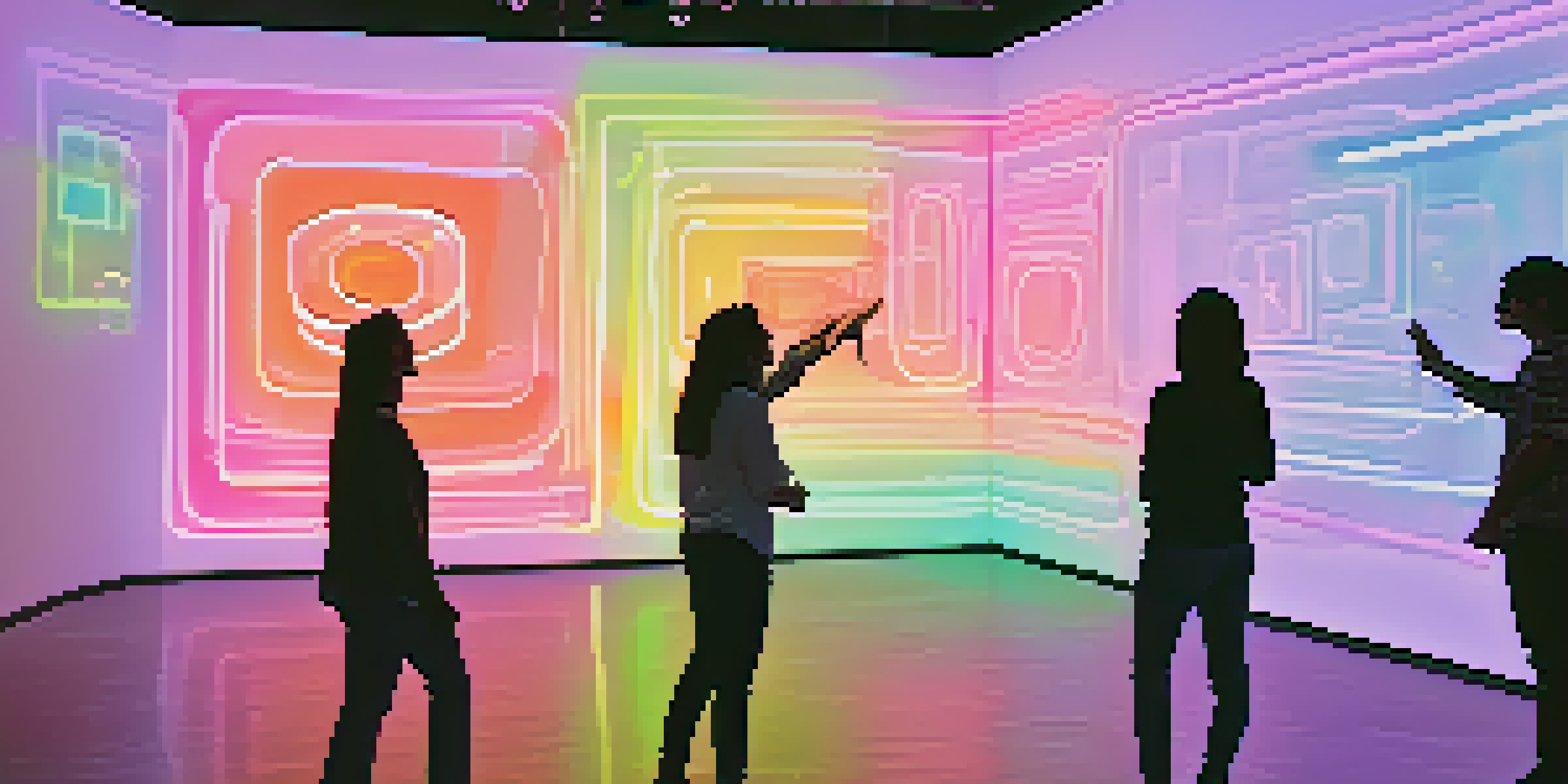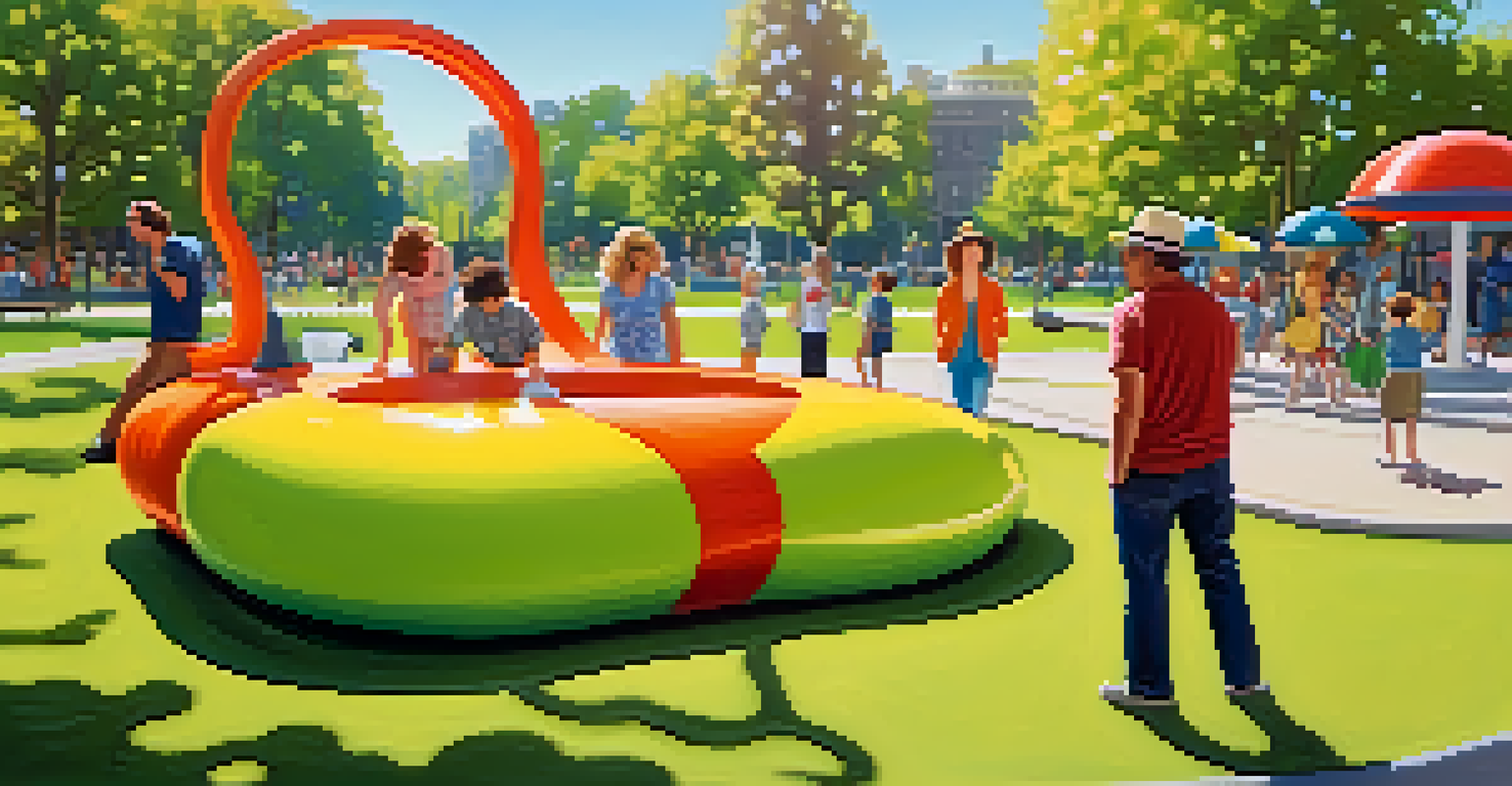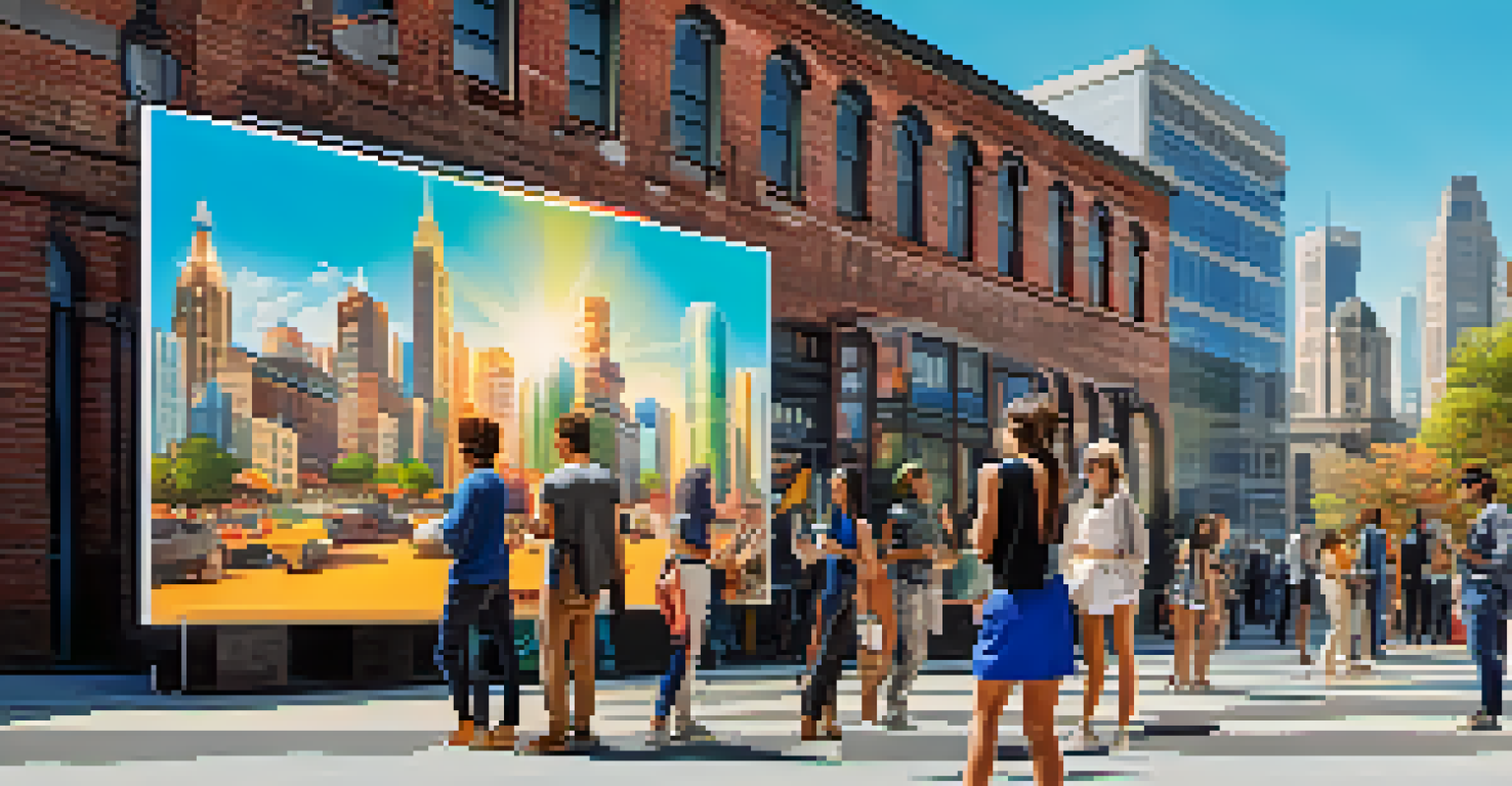The Function of Humor in Interactive Art Installations

Understanding Interactive Art Installations
Interactive art installations are immersive experiences that invite viewers to engage actively rather than passively. Unlike traditional artworks, which often demand silence and contemplation, these installations encourage participation, making the audience an integral part of the artwork. This shift in engagement fosters a dialogue between the artist and the viewer, leading to unique interpretations and experiences.
Art is not a mirror to hold up to society, but a hammer with which to shape it.
The interactive nature of these installations often employs technology, allowing for a dynamic interaction that can change based on audience input. For instance, a projector might respond to movement, creating visuals that evolve as people walk through the space. This adaptability not only captivates the audience but also results in a shared experience that can be both personal and communal.
By blurring the lines between creator and observer, interactive art transforms the experience from mere observation into a playful exploration. This playful aspect is where humor comes into play, making the art accessible and inviting. As viewers find themselves in amusing situations, they are encouraged to let go of their inhibitions and fully immerse themselves in the experience.
The Role of Humor in Art Engagement
Humor serves as a powerful tool to break down barriers between the audience and the artwork. When people laugh, they often feel more relaxed and open, creating a welcoming atmosphere that encourages interaction. This emotional response can be a catalyst for deeper engagement, as laughter fosters a sense of connection, both with the art and with fellow participants.

Consider an interactive installation that uses playful elements, such as quirky animations or silly sound effects, to engage visitors. These humorous aspects can elicit immediate reactions, prompting viewers to explore further and experiment with the installation. The joy of discovery often leads to shared laughter and conversation, enhancing the overall experience.
Engagement through Participation
Interactive art installations transform traditional art by inviting viewers to actively engage, fostering unique experiences and dialogues.
Moreover, humor can provide a commentary on societal norms or current events, inviting the audience to reflect while they enjoy themselves. This duality—entertainment and introspection—ensures that the art resonates on multiple levels, creating layers of meaning that can be unpacked long after the laughter fades.
Creating Relatable Experiences Through Humor
One of the most appealing aspects of humor is its relatability. Interactive art installations that incorporate humor often draw from everyday experiences, allowing viewers to see themselves reflected in the art. This connection can make the artwork feel more accessible, as participants recognize familiar situations or feelings that resonate with their own lives.
Humor is just another defense against the universe.
For example, an installation that features humorous takes on daily routines can spark laughter and nostalgia, prompting viewers to share their own stories. This shared experience builds a sense of community, creating bonds between strangers as they navigate the installation together. The laughter that ensues can break down social barriers, making art feel less intimidating.
Ultimately, by crafting relatable experiences, artists can invite audiences to explore their own perspectives and emotions. Humor acts as a bridge, leading participants into a deeper understanding of themselves and their connections to others, all while having fun in the process.
The Balance of Humor and Meaning
While humor can enhance engagement, striking the right balance with meaningful content is essential. If an installation leans too heavily on humor without substance, it risks becoming trivial or superficial. Successful interactive art installations often weave humor into a narrative that provokes thought, ensuring that laughter and reflection coexist harmoniously.
For instance, consider an installation that uses satire to address serious topics like climate change. The humorous approach can draw in audiences who might otherwise shy away from heavy discussions. By presenting critical issues through a lighthearted lens, artists can engage viewers while fostering important conversations.
Humor as a Connection Tool
Incorporating humor into art breaks down barriers, creating a relaxed atmosphere that encourages deeper interaction and shared experiences.
This balance of humor and meaning keeps the audience invested, prompting them to linger longer and contemplate the deeper implications of the artwork. The engagement that arises from this combination creates a lasting impact, encouraging participants to reflect on their experiences long after they've left the installation.
Technology's Influence on Humorous Interactions
Technology plays a significant role in enhancing the humorous aspects of interactive art installations. From augmented reality to responsive sensors, these tools allow artists to create playful and unexpected interactions that surprise and delight viewers. This element of surprise is often a key component of humor, catching audiences off guard and eliciting laughter.
For instance, an installation might use facial recognition technology to create funny caricatures of participants, encouraging them to engage and laugh at their own likenesses. Such interactions not only entertain but also invite viewers to explore the technology itself, further enriching their experience. The blend of art and technology in this way opens the door for innovative expressions of humor.
As technology continues to advance, the possibilities for integrating humor into interactive art are virtually limitless. Artists can experiment with various forms of media to elicit laughter and provoke thought, creating engaging experiences that resonate with diverse audiences. This evolution ensures that humor will remain a vital element in the future of interactive art.
The Impact of Cultural Context on Humor
Cultural context plays a crucial role in how humor is perceived within interactive art installations. What one group finds funny, another might not understand or appreciate, making it essential for artists to consider their audience. A successful installation often reflects the cultural nuances that shape humor, allowing diverse audiences to connect with the art on a personal level.
For example, an installation that draws on local traditions or current events can resonate more deeply with the community it serves. When humor is rooted in shared experiences, it fosters a sense of belonging and connection among participants. This cultural relevance enhances the overall impact and effectiveness of the installation.
Cultural Context Shapes Humor
Understanding cultural nuances in humor allows artists to create relatable installations that resonate with diverse audiences.
As artists navigate the complexities of humor across different cultures, they can create works that both entertain and challenge preconceived notions. By embracing cultural diversity, interactive art installations can foster dialogue and understanding, showing how humor can bridge gaps and connect people from various backgrounds.
Future Trends: Humor in Interactive Art
As interactive art continues to evolve, humor is likely to play an increasingly prominent role in engaging audiences. With advancements in technology, artists will have more tools at their disposal to create humorous interactions that surprise and delight. This evolution promises to push the boundaries of what interactive art can be, inviting even greater participation and exploration.
Moreover, as societal norms shift and humor adapts, artists will find new ways to incorporate relevant themes that resonate with contemporary audiences. The fusion of humor and art will not only entertain but also reflect the complexities of modern life, encouraging viewers to engage thoughtfully with the world around them.

In the future, we may see interactive art installations that challenge us to laugh at ourselves while addressing serious issues, creating a space for reflection and connection. By embracing humor as a vital component, artists can continue to inspire, provoke, and unite audiences in a shared experience of joy and discovery.